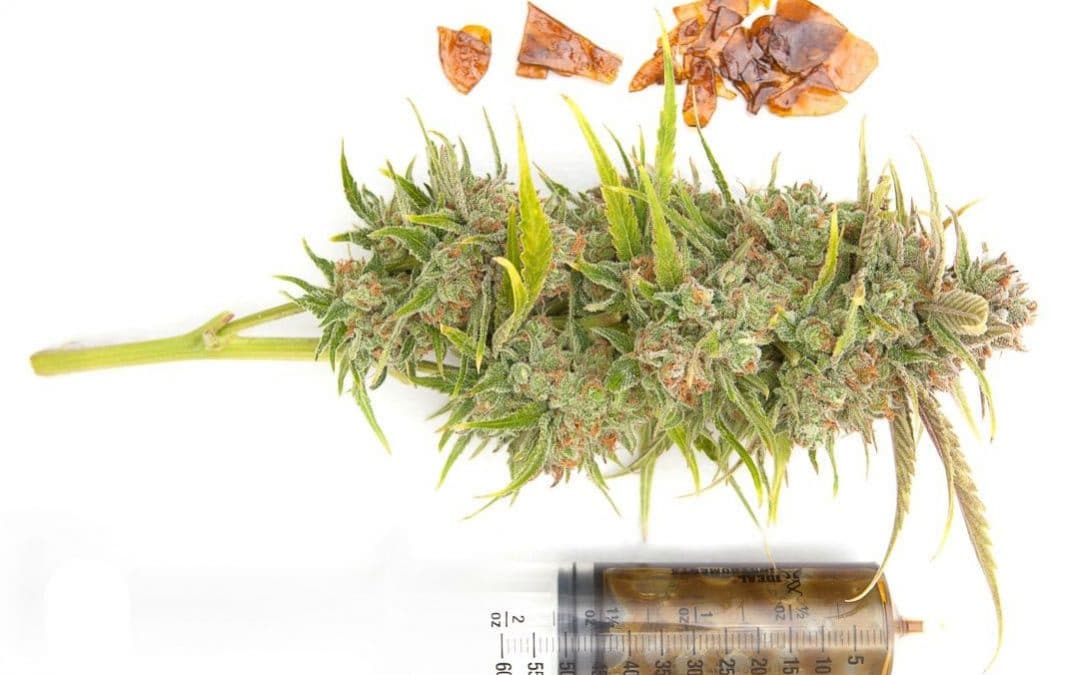The advent of legal cannabis has brought about big developments in the ways we get high. Long gone are the days when smoking a joint or hitting a bong were the only ways to feel the effects Mary Jane offers. Nowadays, a multitude of delivery methods are at our disposal, simplifying consumption but creating questions about what’s best. Here’s an overview to help ease that decision.
Flower — Tried and True
Cannabis at its core is a plant, and no matter how popular other methods become, enjoying pure flower harvested and cured at its peak is always a pleasant experience. While bud is typically smoked in a pipe or joint, it also can be vaporized using a special device. What’s the difference? Smoking means you’re actually setting the plant on fire and inhaling the smoke, while vaporizers utilize heating elements set to lower temperatures than standard combustion to eliminate potentially harmful byproducts and create a vapor you inhale.
Concentrates — Cannabis 2.0
Also known as dabs, concentrates such as wax, shatter, and live resin are the result of various extraction methods that seek to separate the active ingredients in cannabis from the plant material. These oily products typically have much higher cannabinoid levels than your standard bud and are consumed via vaporization. It’s important to note that flower vaporizers and concentrate vaporizers are different due to the viscous nature of dabs versus ground herbs, so make sure you’re using the right device at the right time. Pre-filled, disposable vape pens make it easier than ever to harness the power of concentrates in a discreet, easy-to-use way.
Edibles — More than Your Grandma’s Pot Brownies
Much like other forms of cannabis consumption, edibles have come a long way. A variety of cannabinoid-infused food and drink items are now available, from microwave popcorn to orange soda—and the majority taste nothing like pot! Edibles take longer to kick in than inhaling, anywhere from 30 to 60 minutes (or even longer depending on your metabolism). That’s why it’s critical “to start low and go slow” with these types of products. Some professionals recommend a starting dose of 10mg, others suggests 2.5-5mg for some novice or occasional cannabis consumers.
Topicals — Treatment Without the Buzz
One of the most popular categories of cannabis goods on the market today is topicals, with dozens of cannabinoid-infused salves, lotions, and transdermal patches available. Topicals are applied directly to problem areas to offer localized benefits without the risk of active ingredients reaching the bloodstream (i.e., no psychoactive effect). Popular for sufferers of arthritis, muscle pain, and spasms, topicals also have shown efficacy in treating skin conditions such as psoriasis and eczema.
Sublinguals — Speedy Relief in Sprays or Drops
Under-the-tongue drops containing tetrahydrocannabinol (THC, cannabis’ active ingredient) (or cannabidiol (CBD) are gaining prominence due to their ease of use and fast-acting nature. Sublinguals use the mucous membranes in the mouth to deliver cannabinoids to the bloodstream, with effects seen in five to 10 minutes. These products are ideal for people with seizure disorders or anxiety because they act fast and can be utilized by caregivers to help others cope with a distressing medical episode in mere moments.
Finding the right cannabis consumption method starts with education and may require some trial and error. Think about your needs, your environment, and what makes you comfortable.
Photograph by Allie Beckette, Canna Obscura.
